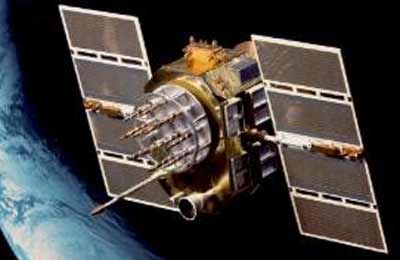What Is Telematics?
The history of telematics, how it is used today and where it is going.
A Brief History of Telematics – Where did it begin?
The origins of telematics is entirely tied to the origin of GPS and satellite tracking at the beginning of the 1960s.
The global positioning system (GPS) was first created for military use to keep track of the troops, planes, ships, and different operations around the world during the cold war. As tensions between the U.S and the Soviet Union grew, so did the funding behind the technology.

NAVSTAR 1 Satellite
The U.S navy started to track nuclear submarines by having six satellites orbiting the poles and find its location within a matter of minutes (learn more). The need for more accurate locations of their assets and at a faster pace progressed, even more, the studies for better technologies. In 1978, the first GPS specific satellite, NAVSTAR 1, was launched. (today, GPS uses a constellation of 31 satellites).
In that same year, the first time the term “telematics” was used – in a report sent to the French government talking about the computerization of society. In french the term “télématique” is the combination of telecommunications and informatique (computer science information).

President Clinton in 1996
The rapid evolution of GPS and computers lead government officials over the world to discuss how to make this technology available to the public in the 1980s. In 1983, a Korean airplane unknowingly entered Soviet airspace and was struck down, with over 200 casualties. This lead to president Reagan officially announced that GPS would be available to the public. The European Parliament created a program in 1984 called DRIVE, which ushered in a wave of research studies on how to use telematics to raise the levels of efficiency and make the roads safer. In 1985 the first car navigation system for consumers was launched in the United States, called Etak.
By the 1990s GPS tech had finally reached the consumer market, with President Clinton signing a bill making GPS an international utility in 1996, businesses would be able to use it free of charge. This innovation made way for a variety of companies to launch their systems, fleet management, and tracking slowly becoming an excellent complementary for any large operation to invest in by the early 2000s.
How Telematics Is Used Today
Location Tracking
Today, GPS is still one of the most powerful and commonly used telematics features in supply chain operations. Due to the size of plants and vehicle fleets, locating vehicles through GPS is a must for fleet managers and maintenance teams. Also, having the ability to set geofencing parameters enforces operators to only drive within the limit managers set. It also comes in handy if there was ever a concern with theft.
In addition to GPS, telematics systems have continued to evolve to be able to capture additional operational data such as engine run time, operator authentication, load weight and even data that could signal abuse like sharp turns or impacts.
Predictive Maintenance

With one of the largest costs an operation incurs being maintenance, having the ability to collect and use this data plays a significant role in identifying ways to decrease those costs. Fleet managers can use actual hour meter data to determine the proper intertervals for scheduling preventative maintenance versus using a calendar system that can result in over or under maintaining a vehicle. In addition, by knowing a vehicle’s usage patterns, fleet managers can schedule for maintenance during downtimes in order to avoid a complete shutdown that can slow down productivity in your operation.
Safety & Compliance
As mentioned before, safety was a main reason for telematics back in the 80s and 90s, and today the same still holds true. Accident costs can be extremely detrimental to an organization, so it is becoming more and more imperative that an operation enforces proper handling and usage. Telematics systems today can require an operator to complete a checklist before operating a vehicle. They can even detect if there has been an impact or sharp turn, and in the event of an accident, can even be a simple way for it to be reported.
Productivity
Having the right size of fleet, working in the right place at the right time all contributes to a highly efficient and productive operation. By reviewing usage data collected by telematics systems, fleet managers can pinpoint low use assets and redistribute them to areas in need. If there aren’t any areas in need, that asset can be eliminated all together as well as the costs associated with it.
Battery Monitoring
 With the increasing number of electric vehicles and assets being used today, telematics have begun to collect battery data as well. They give insight into this once black box by monitoring water, temperature and charge/discharge levels.
With the increasing number of electric vehicles and assets being used today, telematics have begun to collect battery data as well. They give insight into this once black box by monitoring water, temperature and charge/discharge levels.
______________________
To say telematics has evolved dramatically over the past 20 years would be an understatement. With fleet managers now having the ability to have complete insight into virtually any powered asset within a complex operation, what we call total asset management is becoming the norm for distribution centers over the world.
The Future of Telematics
While telematics abilities have significantly increased, the expectation is for those to only grow. The global smart fleet management market size is expected to reach 565.1 billion USD by 2025, according to a study conducted by Grand View Research, Inc. While a lot of companies have adopted many of the features telematics offer, some are still apprehensive in relying solely on this technology. As e-commerce continues to flourish and the expectations for a fast-turnaround continue to grow
Looking ahead, devices are only becoming essential for managers due to how vital e-commerce’s fast turn-around is to our society and operations all over the world.
Fully automated artificial intelligence operations, self-driving vehicles, and drones, the future is looking more and more dependable on devices that will need telematics to manage and improve productivity.
